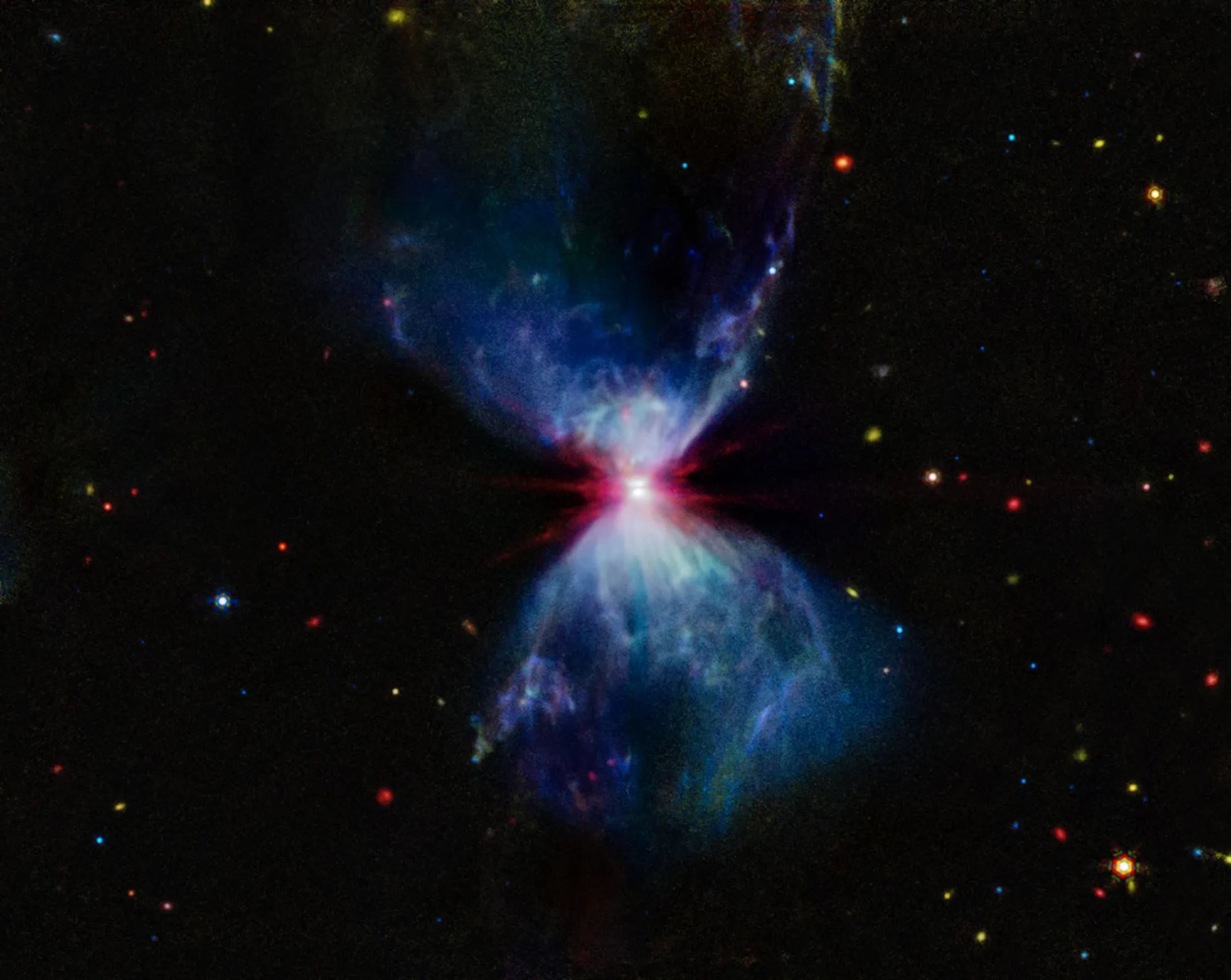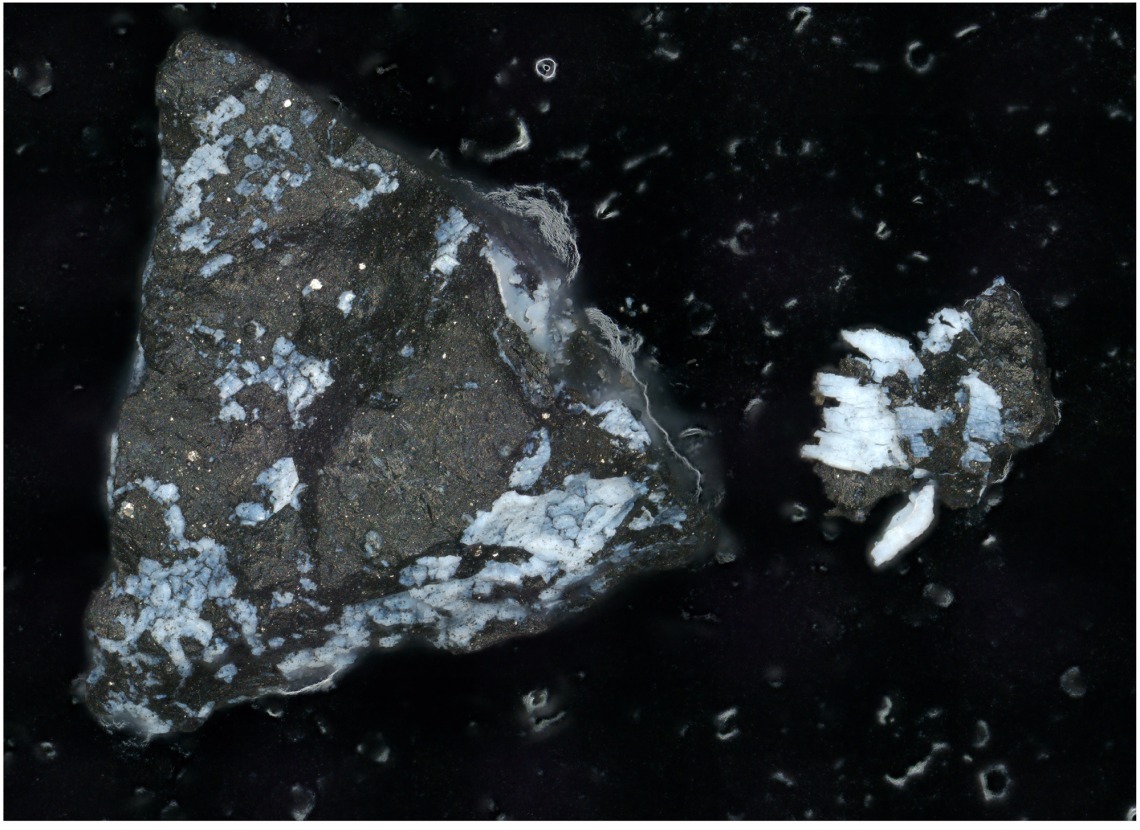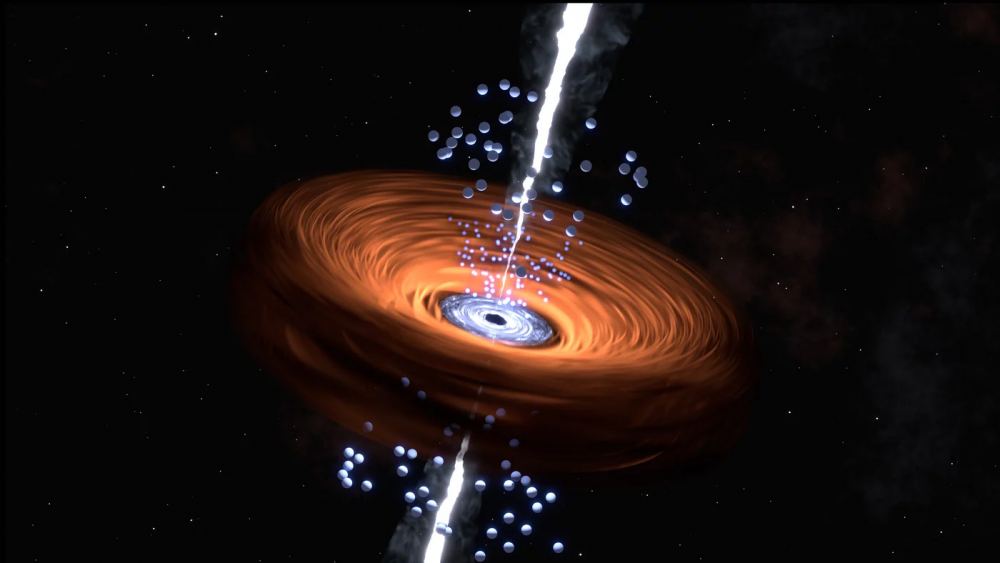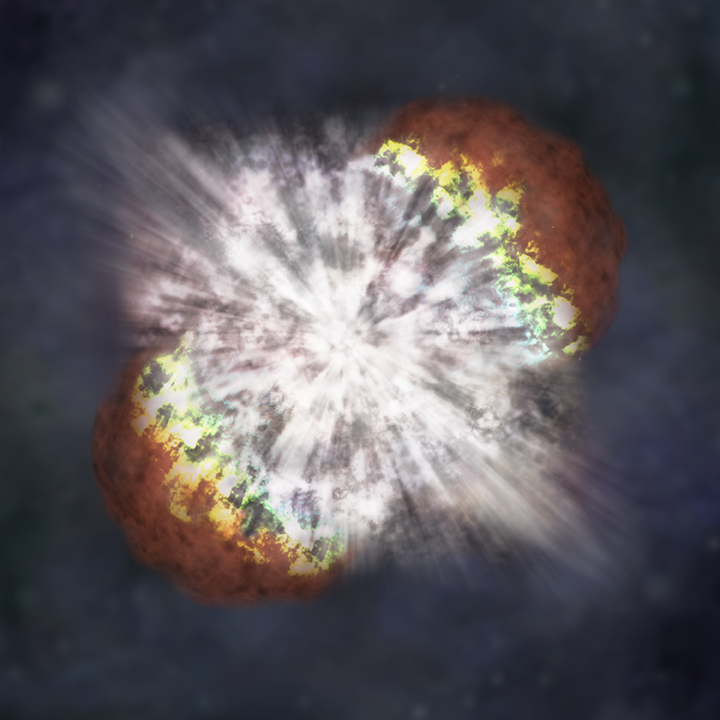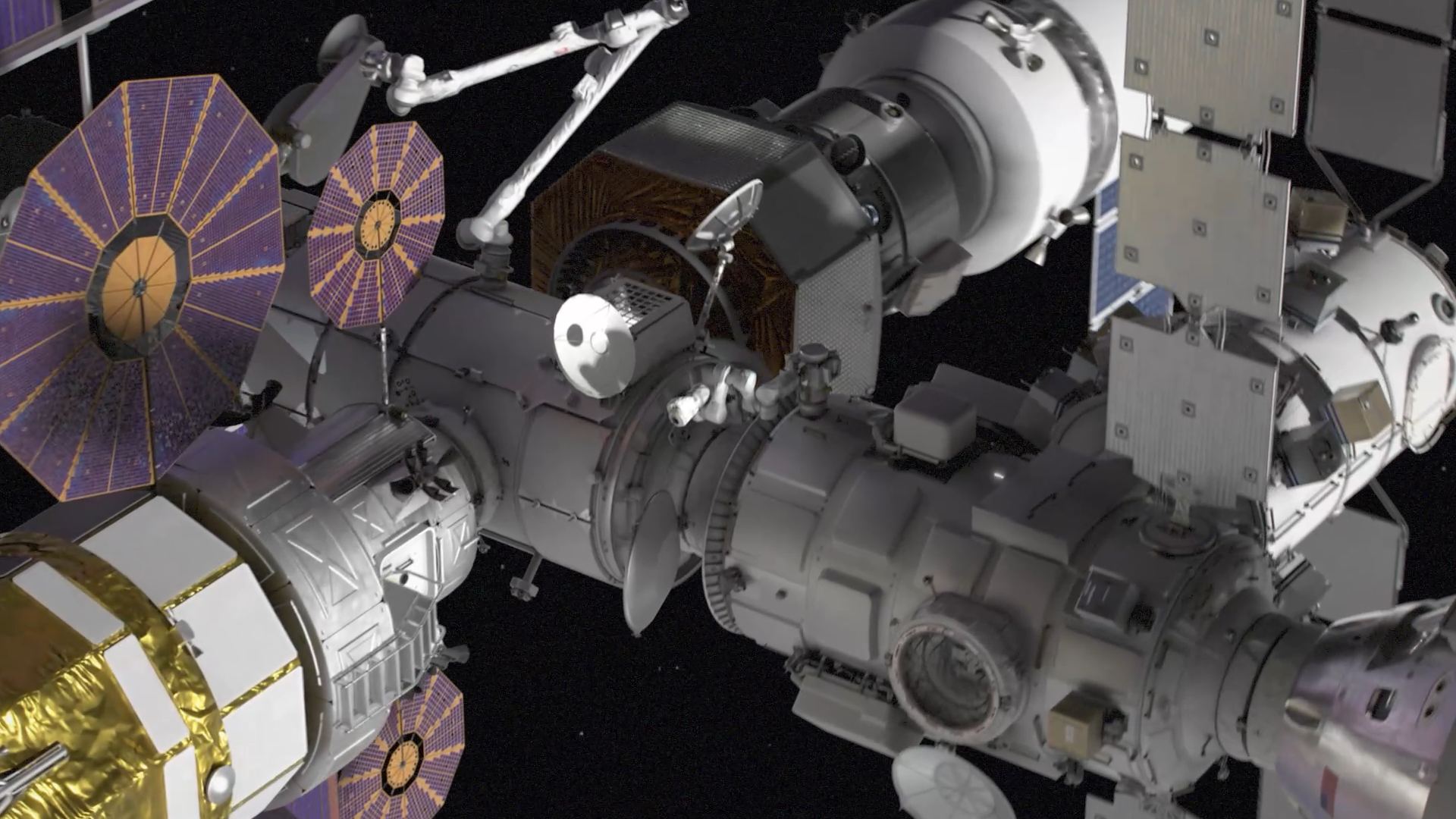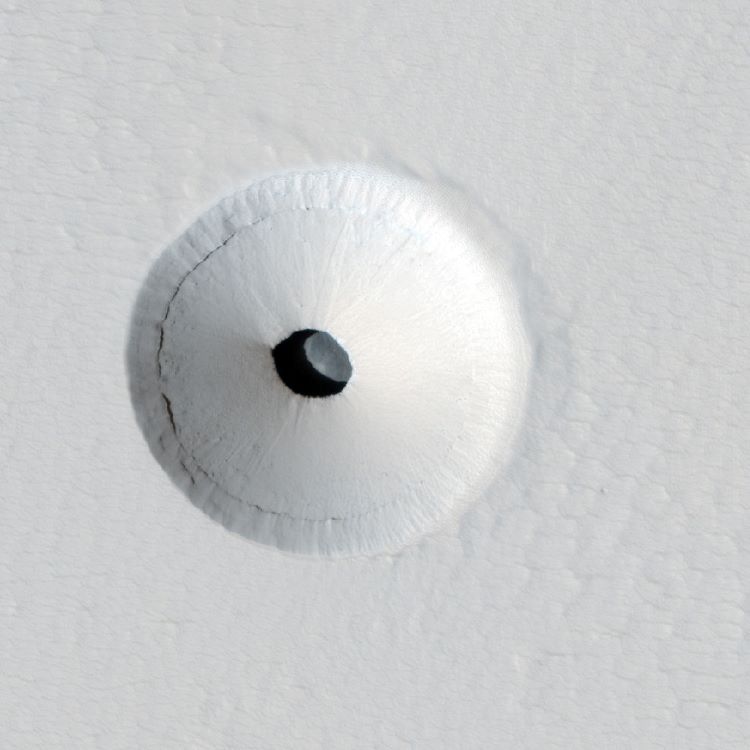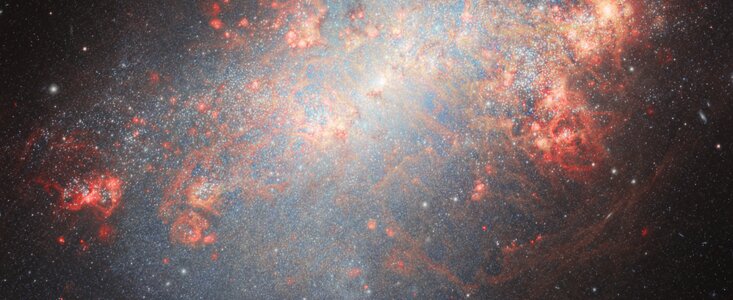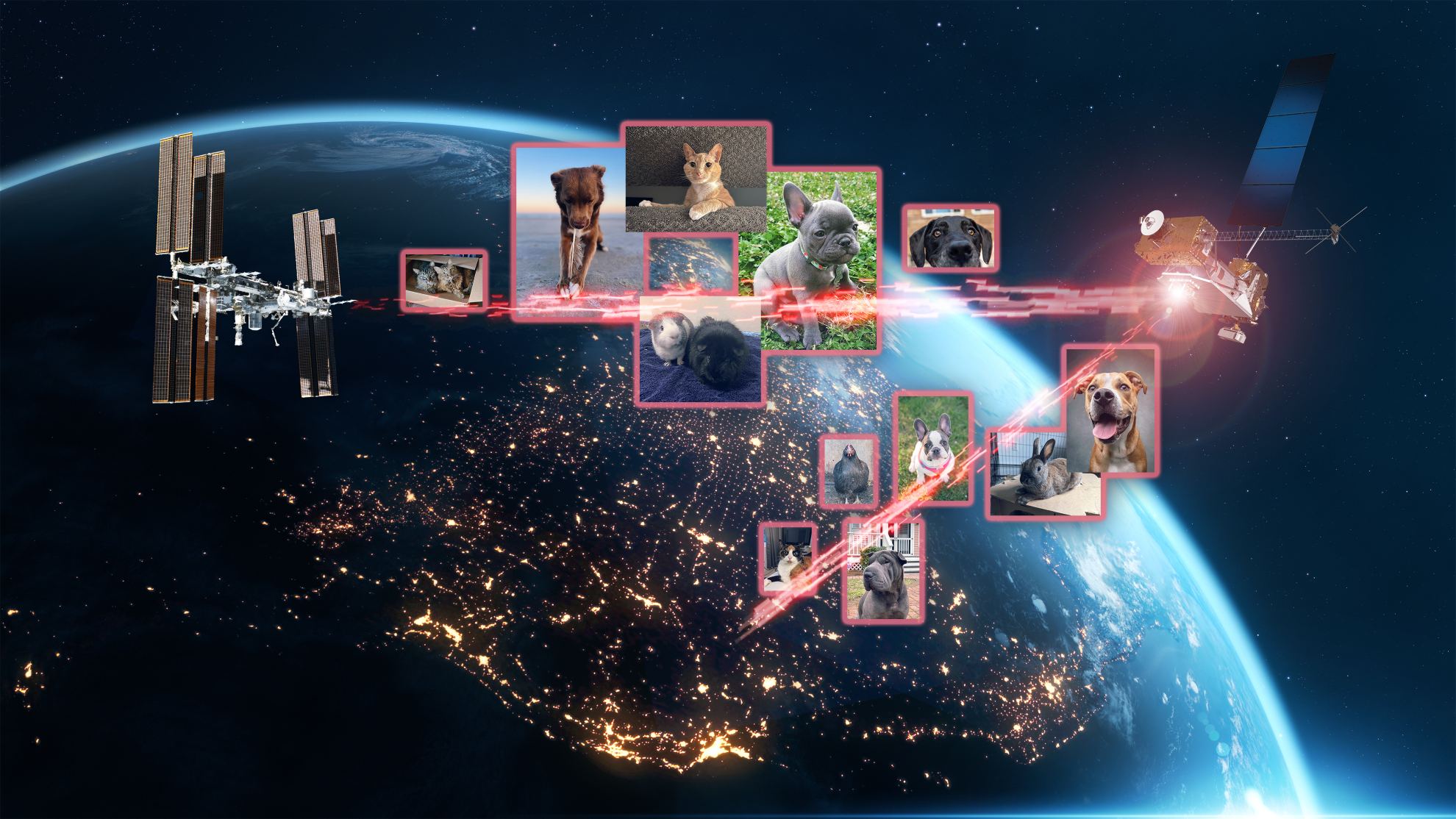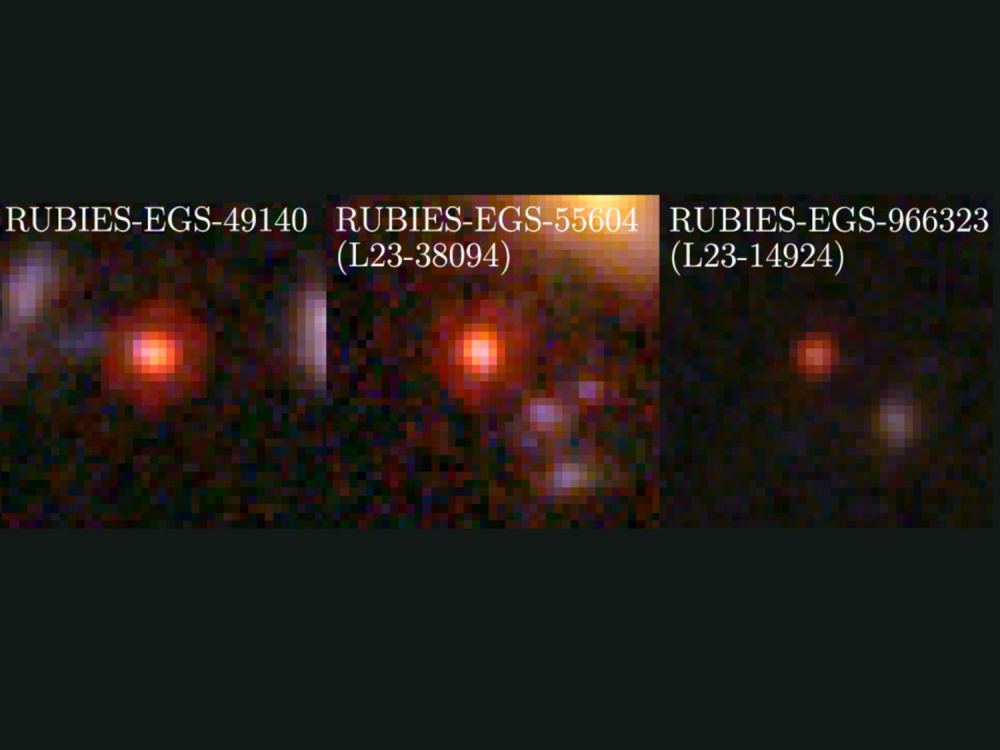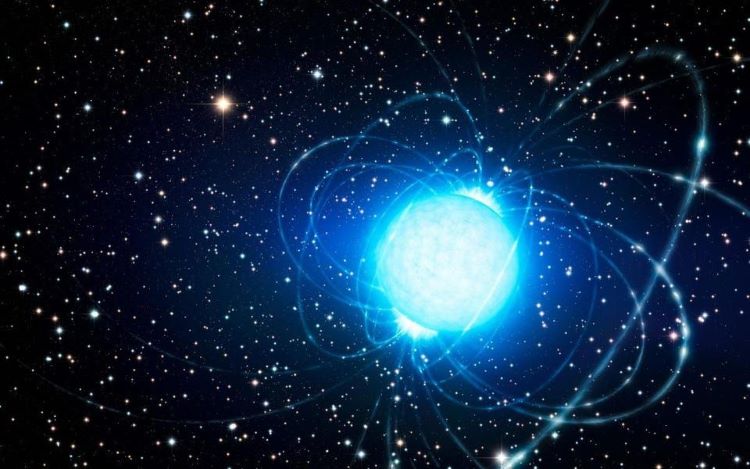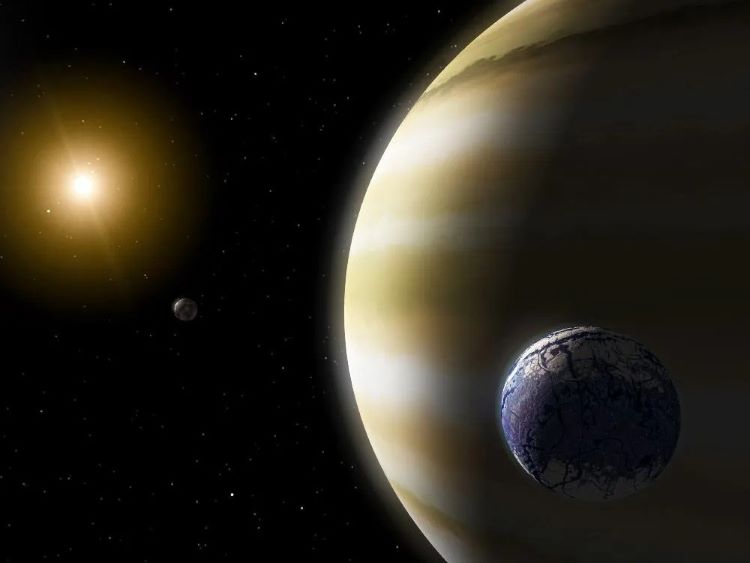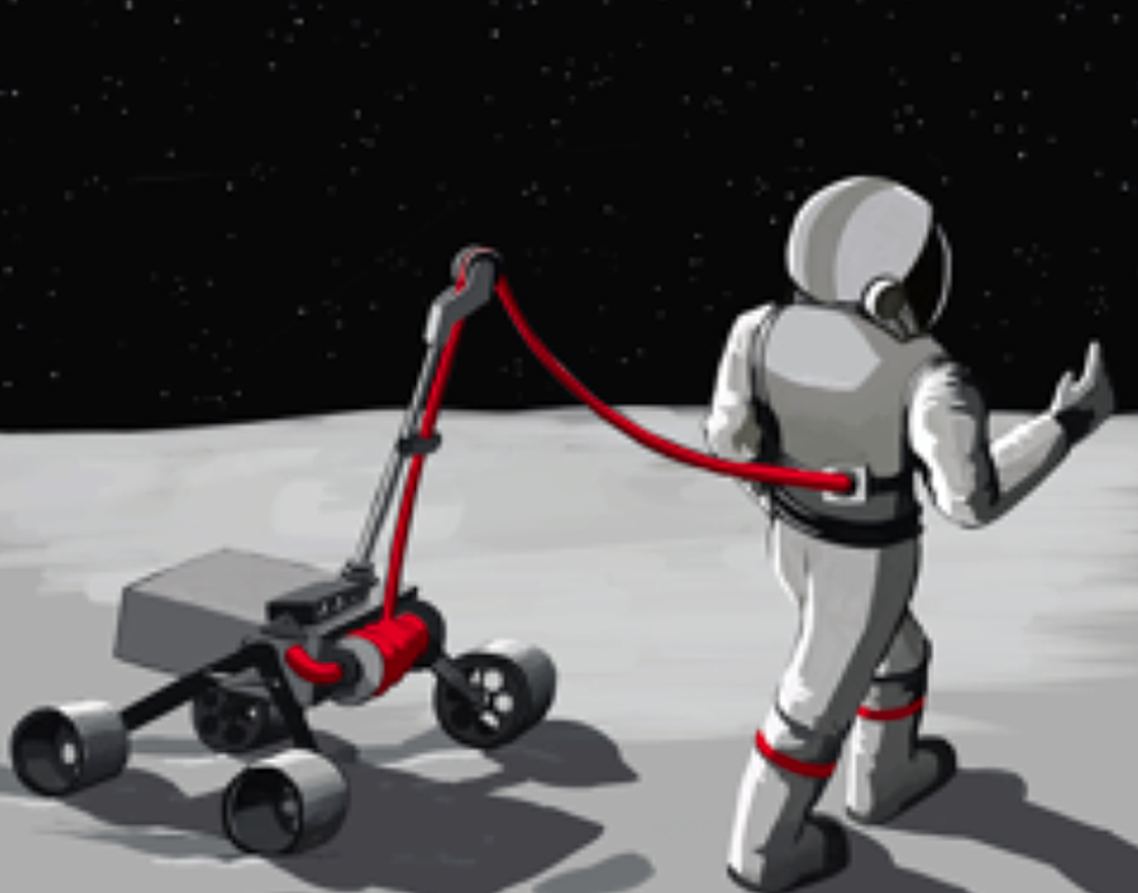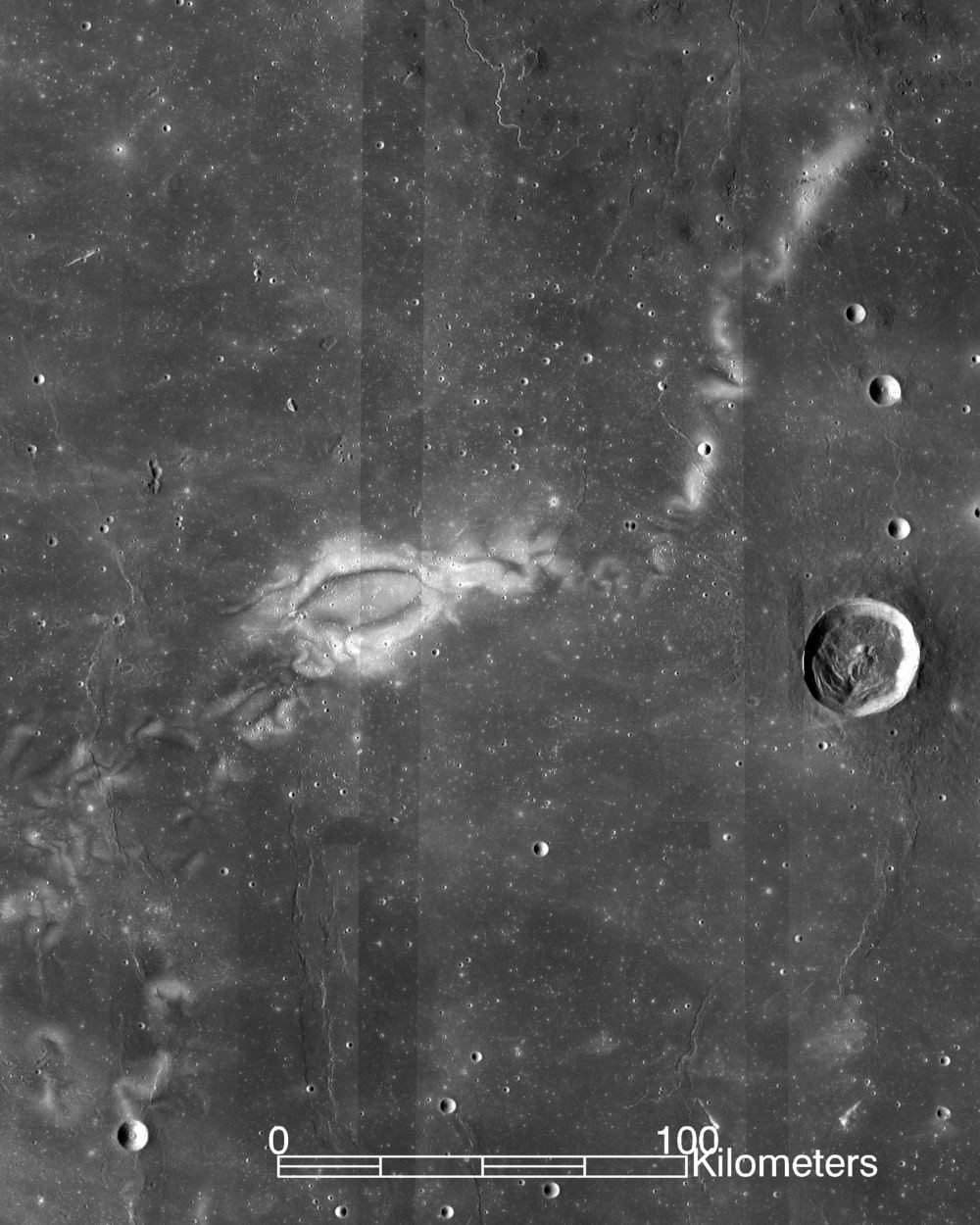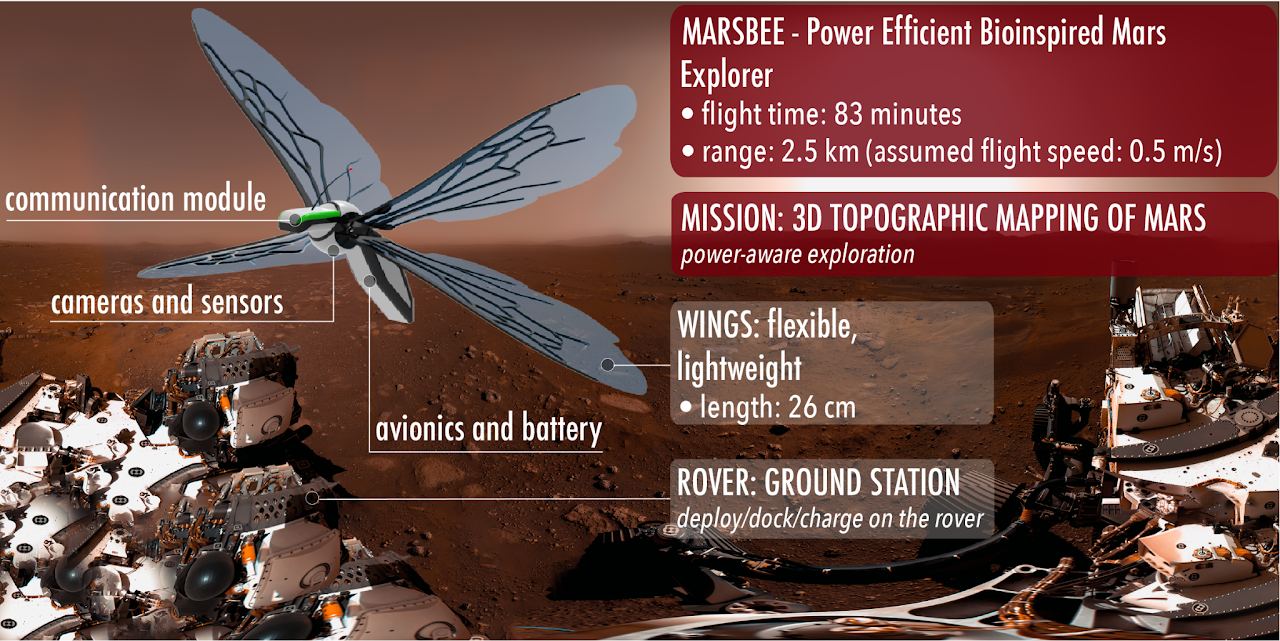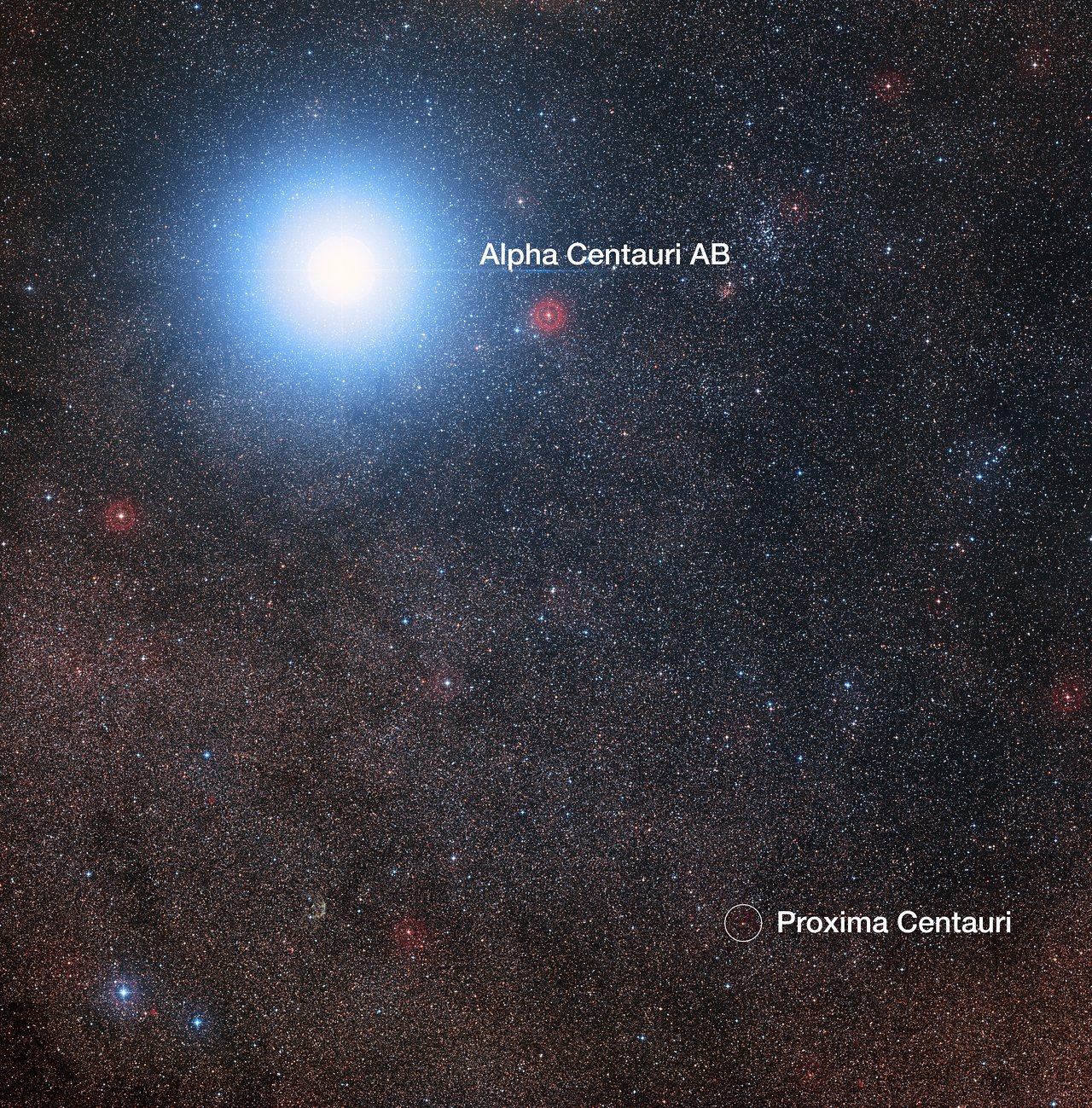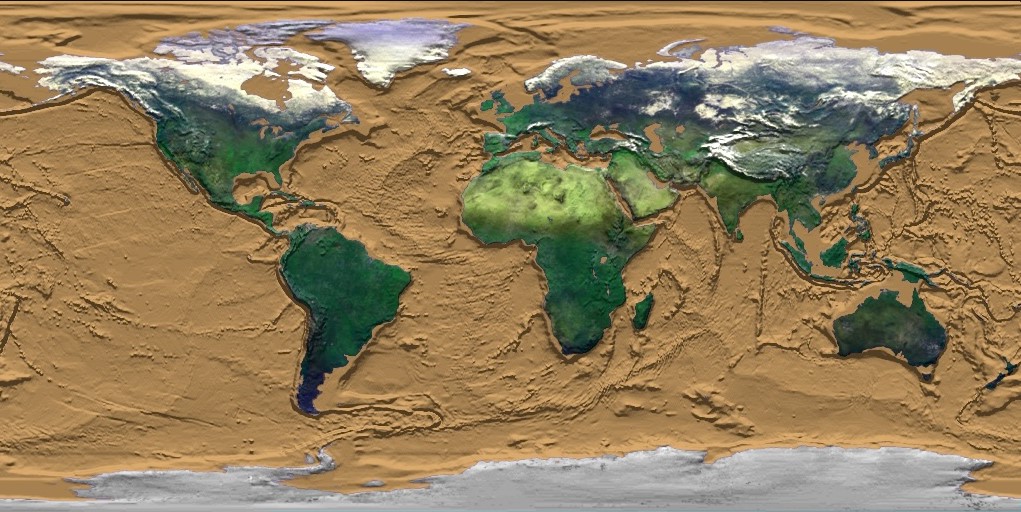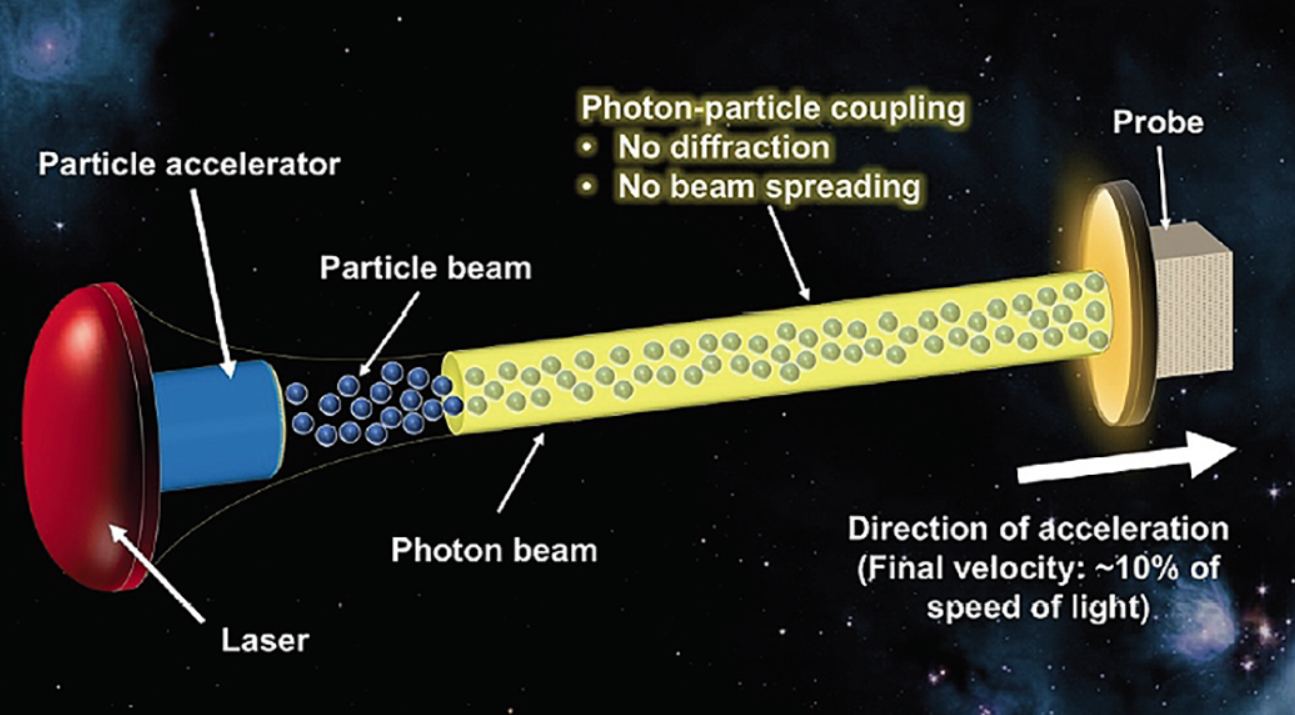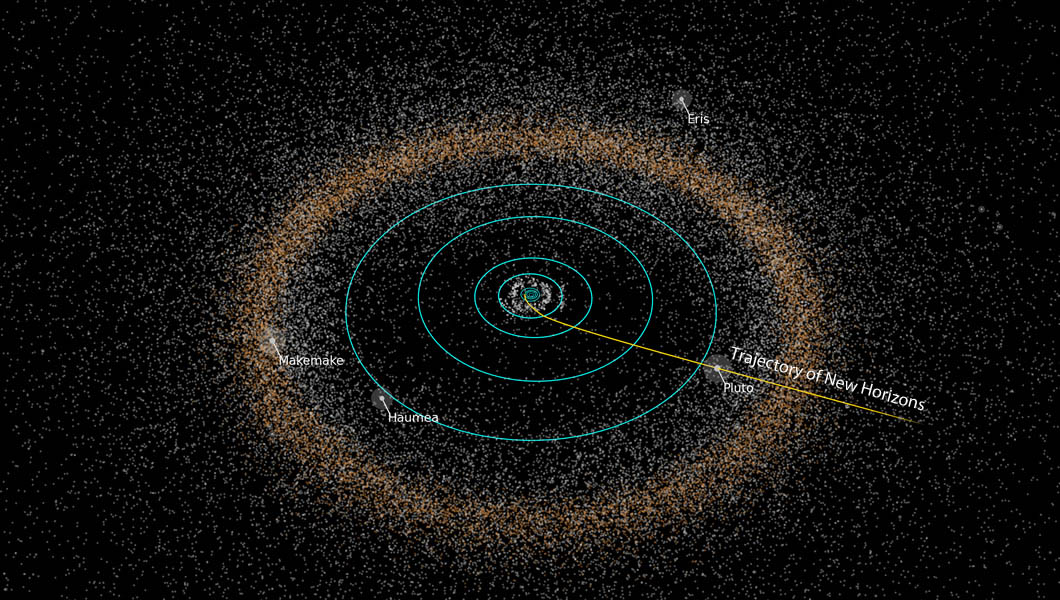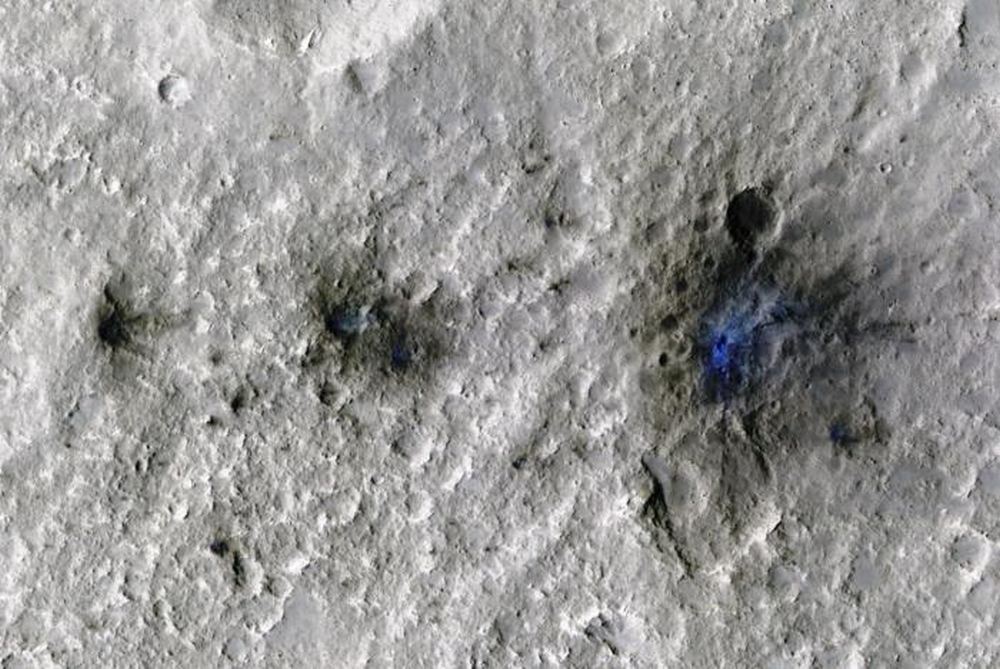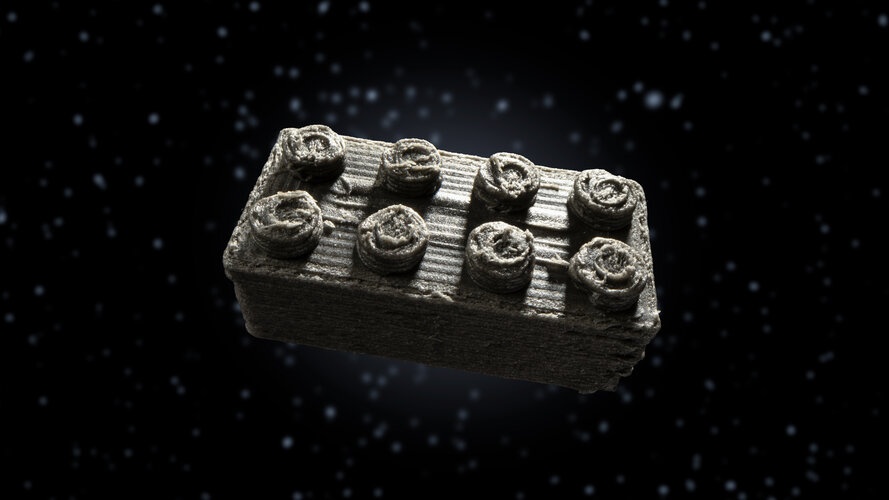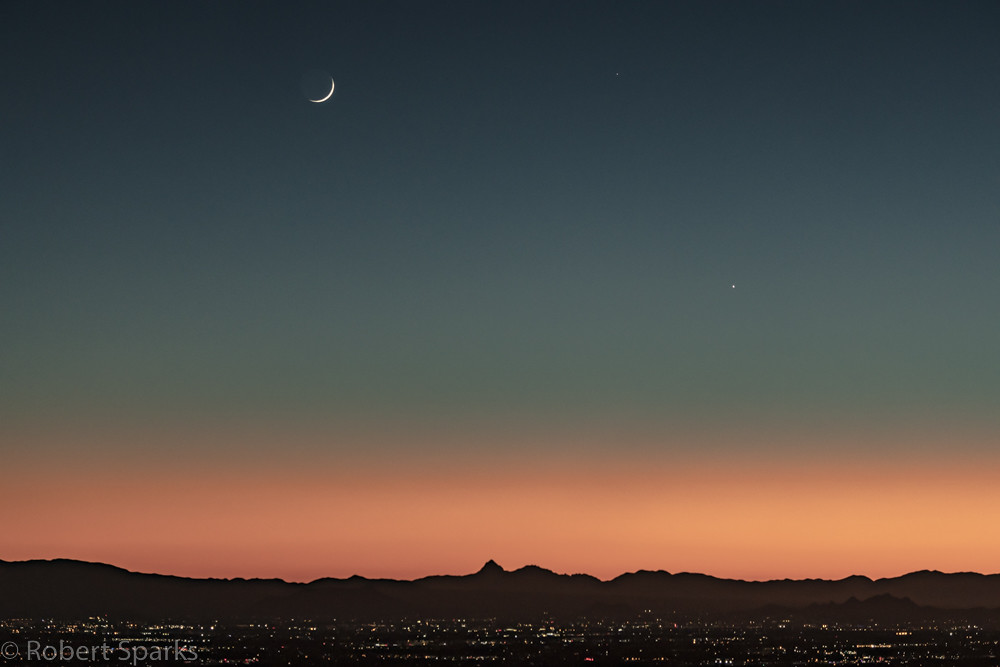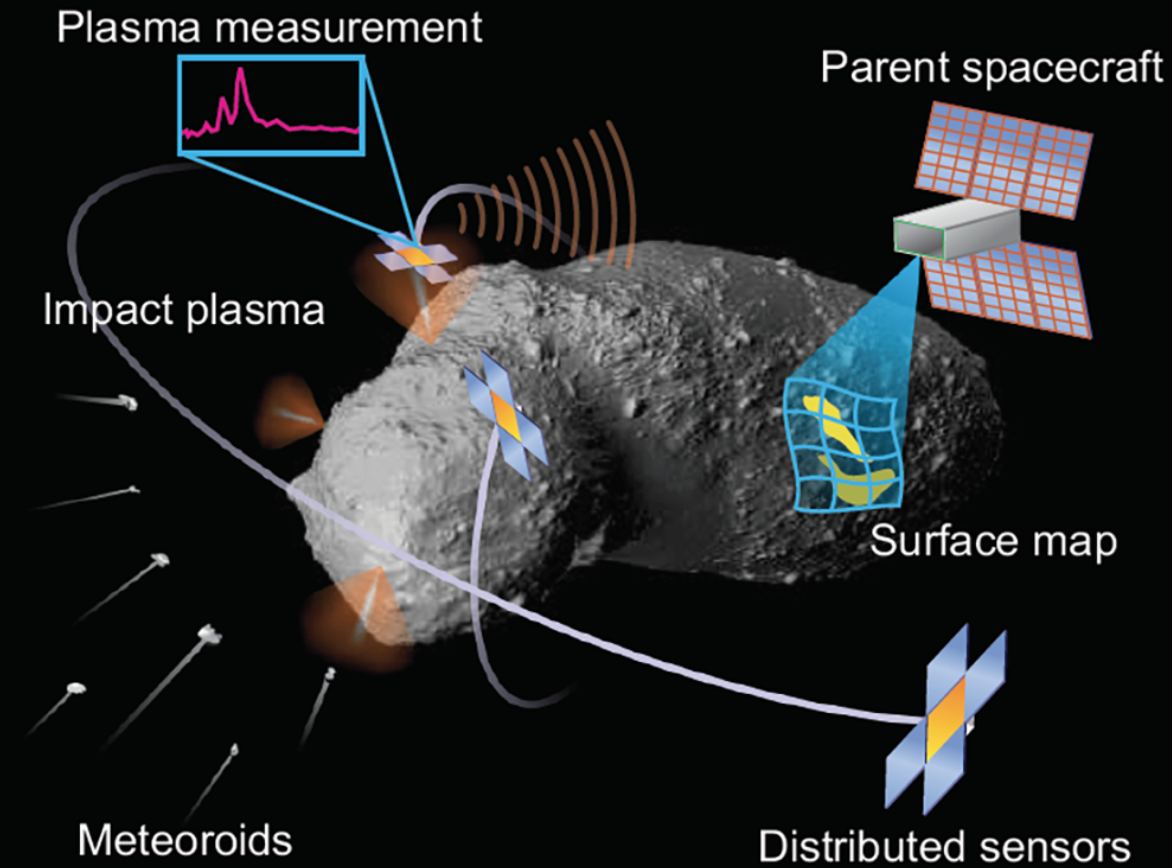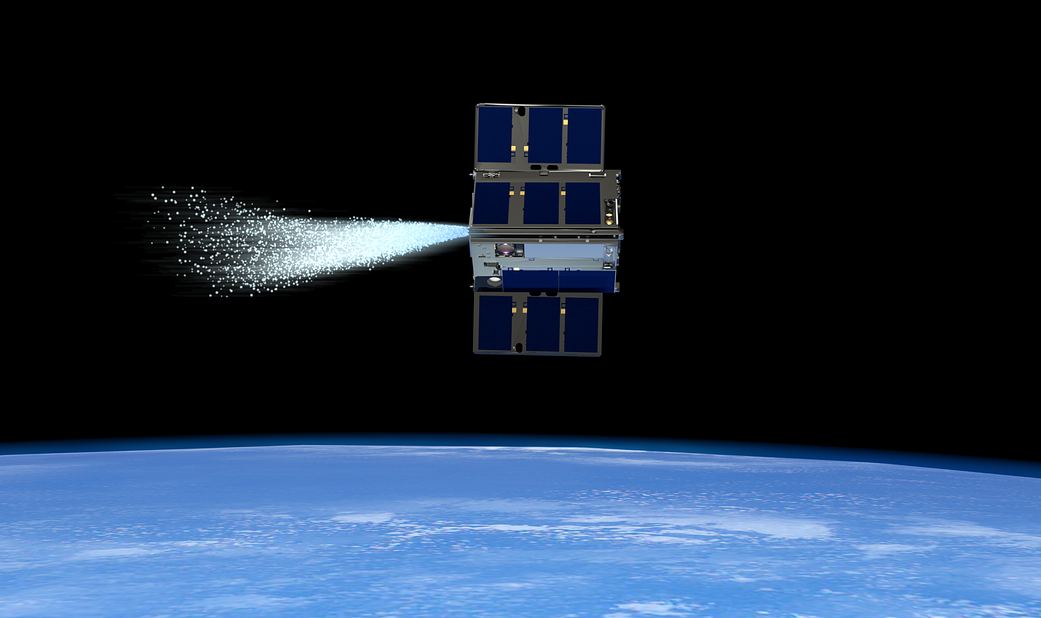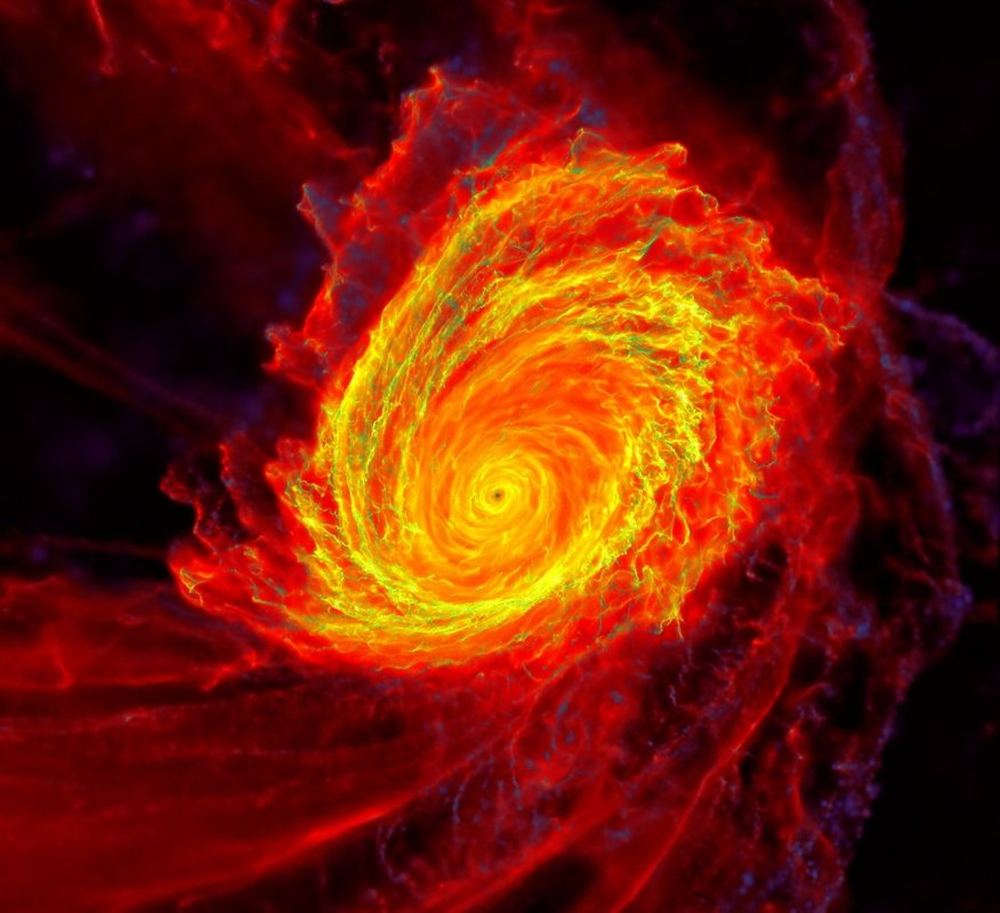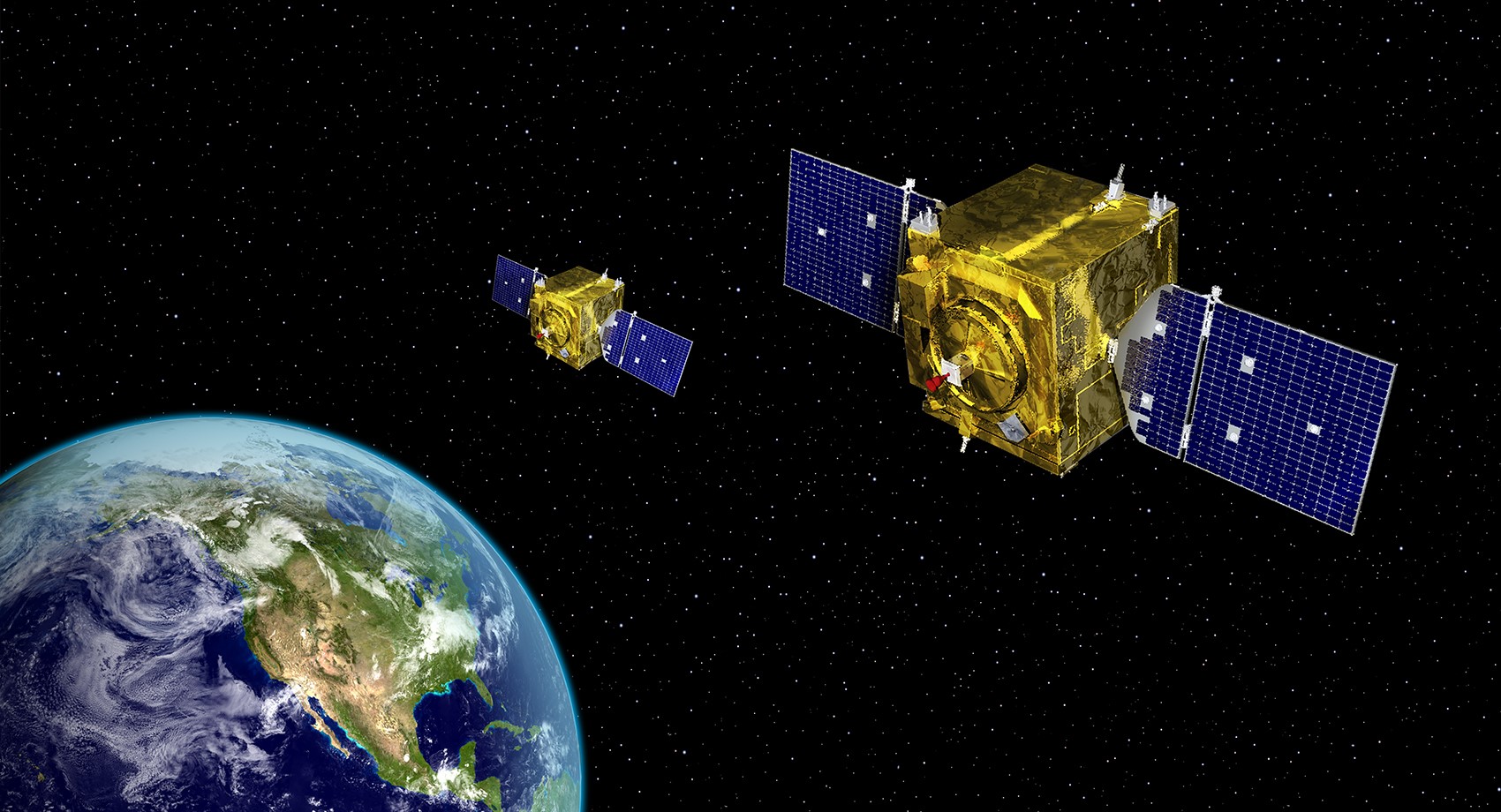Webb Sees a Star in the Midst of Formation
You're looking at an image of the protostar L1527, captured by JWST's MIRI instrument. The young star is about 100,000 years old and still surrounded by a large molecular cloud of gas and dust. Webb's infrared view allows it to pierce through the shrouding material, revealing the bright protostar at the heart of the cloud. The star's rotation and gravity channel the material into the hourglass shape you see, eventually becoming magnetically charged jets.
Read the full story by Evan Gough
🦄 If you enjoy what we do at Universe Today, join our Patreon Club! Here are just some of the perks you can get by subscribing:
- I’ll remove all ads on UniverseToday.com for life, even if you unsubscribe in future
- You’ll get ad-free versions of our videos, so you won’t even have YouTube ads
- Early access to interviews, which we now do in improved quality
- A secret Patreon Email Newsletter
- Access to Patreon-only AMA session once per month
- Behind the scenes and other bonus content
- Help us stay independent and support the team directly
Support Universe Today. Join the Club Now!
Special Earth // Space LEGO From ESA // Amazing Perseverance Fix
Plate tectonics could be incredibly rare, LEGO bricks made from actual space rocks, mapping the Milky Way’s dark matter halo, and Perseverance’s SHERLOC instrument is fully operational again.
🎧 Subscribe to our podcasts:
- Universe Today Podcast. Space news, interviews, Q&As, and exclusive content from Universe Today.
- Astronomy Cast. Your weekly facts-based journey through the cosmos, which I co-host with astronomer Dr. Pamela Gay.
Asteroid Samples Were Once Part of a Wetter World
NASA's OSIRIS-REx mission delivered samples of the asteroid Bennu to researchers on Earth, providing a look at pristine materials that formed early on in the Solar System's history. Researchers have discovered that the samples are unaltered and haven't melted and resolidified since their formation. One surprising discovery is that the samples mirror the rock found at Earth's mid-ocean ridges, suggesting they encountered water for long periods.
Read the full story by Evan Gough
Earliest Supermassive Black Holes Were "Shockingly Normal"
Astronomers have found several examples of supermassive black holes, which had already packed on significant weight early on in the Universe. Even within the first billion years of the Universe's history, there were black holes with a billion times the mass of the Sun. JWST helped observe the regions around these early black holes and found them "shockingly normal," which provides further strength to direct collapse or primordial black hole formation.
Read the full story by Carolyn Collins Petersen
Supernovae: Why Study Them? What can They Teach us About Finding Life Beyond Earth?
When massive stars die, they can detonate as supernovae, releasing more radiation than the rest of their galaxy. Ancient astronomers kept records of stars that suddenly appeared in the sky, blazing for weeks, sometimes even visible during the day. Because they're so bright, astronomers can use them in various research, from measuring distance in the Universe to studying the manufacture of the heavier elements in the Universe.
Read the full story by Laurence Tognetti
NASA Releases a New 3D Animation of the Lunar Gateway
As part of the Artemis missions, NASA is building the Lunar Gateway in an orbit that provides easier access to the Moon. Construction begins in 2028 with Artemis IV, and elements will be added to the station in the following missions. NASA has released a new 3D animation of the Lunar Gateway, which shows what the finished Gateway will look like, including additional modules provided by partner nations. There's even an Orion and lunar landers docked to carry astronauts.
Read the full story by Mark Thompson
Determining the Safest Martian Caves for Future Astronauts
Although the Moon and Mars surface are hostile, with extreme temperatures, radiation, and a lack of atmosphere, natural caves could provide a safer home for explorers: lava tubes. These were carved out by lava flows in the ancient past and could have collapsed ceilings providing access. Researchers have studied a range of lava tubes on Mars, working out which could be the safest for humans to explore and live inside.
Read the full story by Laurence Tognetti
Merging Galaxies Make for Explosive Star Formation
The Gemini Observatory has released a new image that shows furious star formation in the irregular galaxy NGC 4449. Astronomers have classified this as a "Magellanic-type" galaxy because of its similarity to the Magellanic Clouds, but smaller. The small galaxy is surrounded by a halo of smaller dwarf galaxies, two of which are in the process of merging with NGC 4449, crashing clouds of gas together and driving all this additional star formation.
Read the full story by Mark Thompson
The Space Station Now Has Blisteringly Fast Internet
NASA has tested a new end-to-end laser transmission system capable of sending data to the International Space Station at 1.2 gigabits per second, which is, sadly, faster than many broadband connections. The agency used the opportunity to send images and videos of employees' pets up to the station, using bandwidth that would normally have been too precious for this kind of frivolity. The data was sent from Earth and relayed off a geosynchronous satellite to the station.
Read the full story by Cathrine Versfeld
Galaxies Filled With Old Stars Seen Shortly After the Big Bang
JWST has peered earlier into the Universe than any observatory, finding a range of galaxies that are more massive and brighter than astronomers ever predicted. Now, the telescope has found a handful of galaxies that contain "old stars" hundreds of millions of years old, not what you'd expect to see in a young universe. Astronomers also discovered the signatures of supermassive black holes with hundreds or even thousands of times the mass of Milky Way's black hole.
Read the full story by Carolyn Collins Petersen
Neutron Stars: Why Study Them? What Makes Them so Fascinating?
When stars more massive than the Sun run out of fuel in their cores, they can impose, producing supernovae and leaving behind neutron stars. These are compact, exotic objects with several times the mass of the Sun compressed down into an object the size of a city. They can rotate hundreds of times a second, releasing beams of radiation that astronomers use to help study the Universe, from measuring motion to detecting background gravitational waves.
Read the full story by Laurence Tognetti
What's Next for the Event Horizon Telescope? Twelve Possible New Targets
The Event Horizon Telescope delivered stunning images of the event horizons of the supermassive black holes at the hearts of M87 and the Milky Way. From our perspective, these are the two largest black holes, so they were the best place to start. A new paper proposes what might be possible with a next generation EHT and suggests the twelve next targets with the largest angular size and produce the most light from our perspective.
Read the full story by Mark Thompson
Exomoons: Why Study Them? What can They Teach us About Finding Life Beyond Earth?
We know of almost 6,000 confirmed exoplanets; if our Solar System is any guide, most of them will have exomoons. But so far, there has only been faint evidence of any exoplanets with moons. New techniques and technologies are becoming available that might finally make the detection of exomoons possible, giving us the first insights into how common these moons are. Could they even support life? Enjoy this interview with exomoon researcher David Kipping.
Read the full story by Laurence Tognetti
Robotic Rover Could Support Astronauts on Moonwalks
When the Apollo astronauts explored the lunar surface, they carried heavy backpacks weighing 61 kg (which felt lighter in the lunar gravity). Instead of shouldering all that weight, what if a wheeled robotic companion could carry the load for you? In 2018, NASA awarded a NIAC grant to a team developing a "Biobot" concept. This wheeled robot would carry all the life support equipment for an astronaut, attached with a tether, giving them more mobility.
Read the full story by Andy Tomaswick
Mysterious Swirls on the Moon Could Be Explained by Underground Magma
Astronomers have been puzzling over mysterious swirling features on the lunar surface extending hundreds of kilometers. The rocks in the regions of the swirls are magnetized and interact with the solar wind to redirect particles, causing chemical reactions that darken the surface. But what caused the magnetized regions? Researchers propose that underground magma pockets are slowly cooling in a magnetic field, creating these magnetic regions.
Read the full story by Carolyn Collins Petersen
Could We Replace Ingenuity With a Swarm of Robotic Bees?
NASA's Ingenuity helicopter demonstrated how well a rotor aircraft can explore the Martian terrain. How does this idea scale? In a NIAC grant, researchers proposed that 26-cm long robotic bees with four wings could be a flexible and efficient way to explore Mars. These "MARSBEEs" would have a flight time of 83 minutes, up to 2.5 km from a ground station. With a fleet of bees, a mission could thoroughly explore a vast region of Martian terrain.
Read the full story by Andy Tomaswick
Alpha Centauri Could Have a Super Jupiter in Orbit
The closest sun-like stars to the Solar System are the nearly twin stars in the Alpha Centauri system. Two stars mean double trouble for planets, a three-body interaction that could kick planets out of the system entirely. In a new paper, a researcher proposes that a single large super-jupiter planet could resist the three-body interactions and remain in a stable orbit around Alpha Centauri A at about the distance the Earth orbits the Sun.
Read the full story by Evan Gough
Plate Tectonics Might Only Occur on 0.003% of Planets. That Makes Earth Very Special Indeed.
Despite several worlds with volcanism across the Solar System, only Earth has plate tectonics. It's believed this is one of the drivers that encouraged the formation of life on our planet. However, new research suggests that exoplanets are much more likely to have a single shell of solid rock with occasional volcanic hotspots, like Venus or Mars. In a new study, geologists estimate that terrestrial exoplanets with plate tectonics could occur as infrequently as 0.003%.
Read the full story by Scott Alan Johnston
A Concentrated Beam of Particles and Photons Could Push Us to Proxima Centauri
We're trapped in the Solar System, but humanity has always dreamed of reaching the closest star. Propulsion is always the challenge, carrying enough fuel to make the journey. Lasers or particle beams could overcome this problem since the propellant isn't carried by the probe but delivered by an external station, but both beams and particles have their downsides. A researcher proposes mixing both lasers and particles to accelerate a probe to interstellar speeds.
Read the full story by Andy Tomaswick
More Evidence That the Kuiper Belt is Bigger Than We Thought
After visiting Pluto, New Horizons continued to fly through the icy Kuiper Belt in the outer Solar System. Despite previous estimates that it should end about 50 AU from the Sun, it detected icy particles, suggesting there might even be a second Kuiper Belt. The Subaru Telescope has confirmed that icy objects in this region are orbiting more than 50 AU from the Sun. This research will help astronomers calculate the size of the Sun's planetary disk during formation.
Read the full story by Carolyn Collins Petersen
Basketball-Sized Meteorites Strike the Surface of Mars Every Day
If you want to live on Mars, watch your head; it's raining space rocks. Researchers studying seismic data from NASA's Mars Insight mission estimate that 280 to 360 meteorites strike the surface of Mars, making a new crataer. This new estimate is about five times larger than predicted by previous estimates that used orbital imagery. On average, an 8-meter crater is created once a day, and a 30-meter crater is created about once a month.
Read the full story by Evan Gough
LEGO Bricks Printed out of Space Dust
There have been many proposals for building structures on the Moon out of lunar regolith. But what about using actual LEGO bricks? Researchers ground up a 4.5 billion-year-old meteorite and used the dust to 3D print LEGO-style space bricks. They actually click together like the plastic variety, but they only come in one color: grey. LEGO will showcase the space bricks at some of its stores.
Read the full story by Nancy Atkinson
A New View of Olympus Mons
NASA's Mars Odyssey has been orbiting the Red Planet for 23 years and recently completed its 100,000th orbit. Its main task has been mapping minerals and ice on the surface of Mars, but it recently sent home this cool new image of Olympus Mons, the tallest volcano in the Solar System. The spacecraft sees in narrow strips from above, looking directly down. NASA turned the spacecraft sideways, towards the horizon, to see Olympus Mons from a unique perspective.
Read the full story by Evan Gough
Meeting Mercury at Dusk in July
Skywatchers know there aren't any planets in the evening sky now. Mars, Jupiter, and Saturn are all visible in the dawn sky and won't appear in the evenings until the end of 2024. But one planet is breaking that trend: Mercury. If you've got a nice view of the horizon, you should see Mercury with your own eyes in July, reaching its greatest elongation on July 22nd. It still doesn't look like much in a telescope, just a bright dot, but you'll know what you see: Mercury.
Read the full story by David Dickinson
Swarms of Orbiting Sensors Could Map An Asteroid's Surface
Although there are thousands of large asteroids across the Solar System, each has a unique history from formation through evolution over 4.5 billion years of Solar System history. What can we do to make the most of a visit to one of these primordial space rocks? A NASA-funded study proposed a swarm of orbiting sensors that could orbit a spacecraft, watching for meteoroid impacts on the surface. These strikes release plasma that reveals the chemicals of the asteroid.
Read the full story by Andy Tomaswick
CubeSat Propulsion Technologies are Taking Off
The CubeSat revolution has arrived, with tiny satellites fulfilling many of the roles of their larger predecesessors. More than 2,400 CubeSats are in orbit, with more going into space every month. A team of researchers recently investigated new propulsion systems for CubeSats, some familiar, like ion engines or solar sails, and some completely novel ideas waiting to be tested, like tethers or magnetic sails.
Read the full story by Andy Tomaswick
Black Holes Dominate Large Regions of Space, But They're Mysterious
JWST has peered into the early Universe and seen surprisingly massive black holes actively feeding on matter. It's difficult to observe them at work, so scientists rely on simulations to bridge the gap between the cosmic background radiation and the more mature galaxies we see today. Simulating these early supermassive black holes is a key to this understanding, incorporating different factors to recreate them and their surrounding galaxies.
Read the full story by Evan Gough
The First Space War Is Here: Find Out How the Next One May Play Out
Russia's invasion of Ukraine has led to a space war, with satellites collecting imagery, identifying targets, and coordinating the movements of troops for both countries. In a new podcast, Alan Boyle interviews David Ignatius, a journalist who writes about foreign affairs and has a hobby of penning spy fiction. Ignatius predicts the future of space-based conflict, including the possibility that Russia might bring down entire satellite constellations.
Read the full story by Alan Boyle
Other Interesting Space Stuff
- NASA Orders More Tests on Starliner, but Says Crew isn’t Stranded in Space
- Watch India's Reusable Space Plane Prototype ace its Final Landing Test (Video)
- Firefly is Building Fast and Breaking Things on Path to a Reusable Rocket
- The Earth Heated up When its day was 22 Hours Long
- NASA Selects SpaceX to Launch a Gamma-ray Telescope Into an Unusual Orbit
- Blue Origin Logs SpaceX Starship Concerns as it Preps for 1st New Glenn Launch
- Foust Forward: Who’s Afraid of the big bad Starship?
- Ask Ethan: Is it all-or-Nothing for the Expanding Universe?
Thanks!
Fraser Cain
Publisher
Universe Today
As always, if you have comments or questions, or suggestions on how I can improve this newsletter, please don't hesitate to reply this email or email me at [email protected].

This work is licensed under a Creative Commons Attribution 4.0 International License.
Click here to Unsubscribe from this list.
Universe Today - #3400 333 Hunt Road - Courtenay, BC V9N 3R6 - Canada

